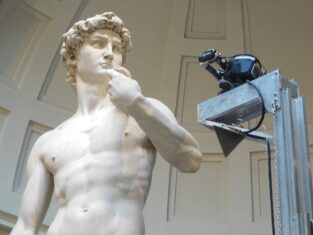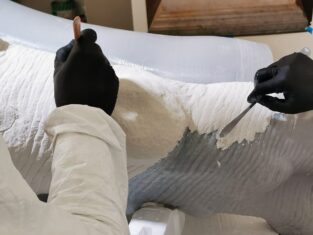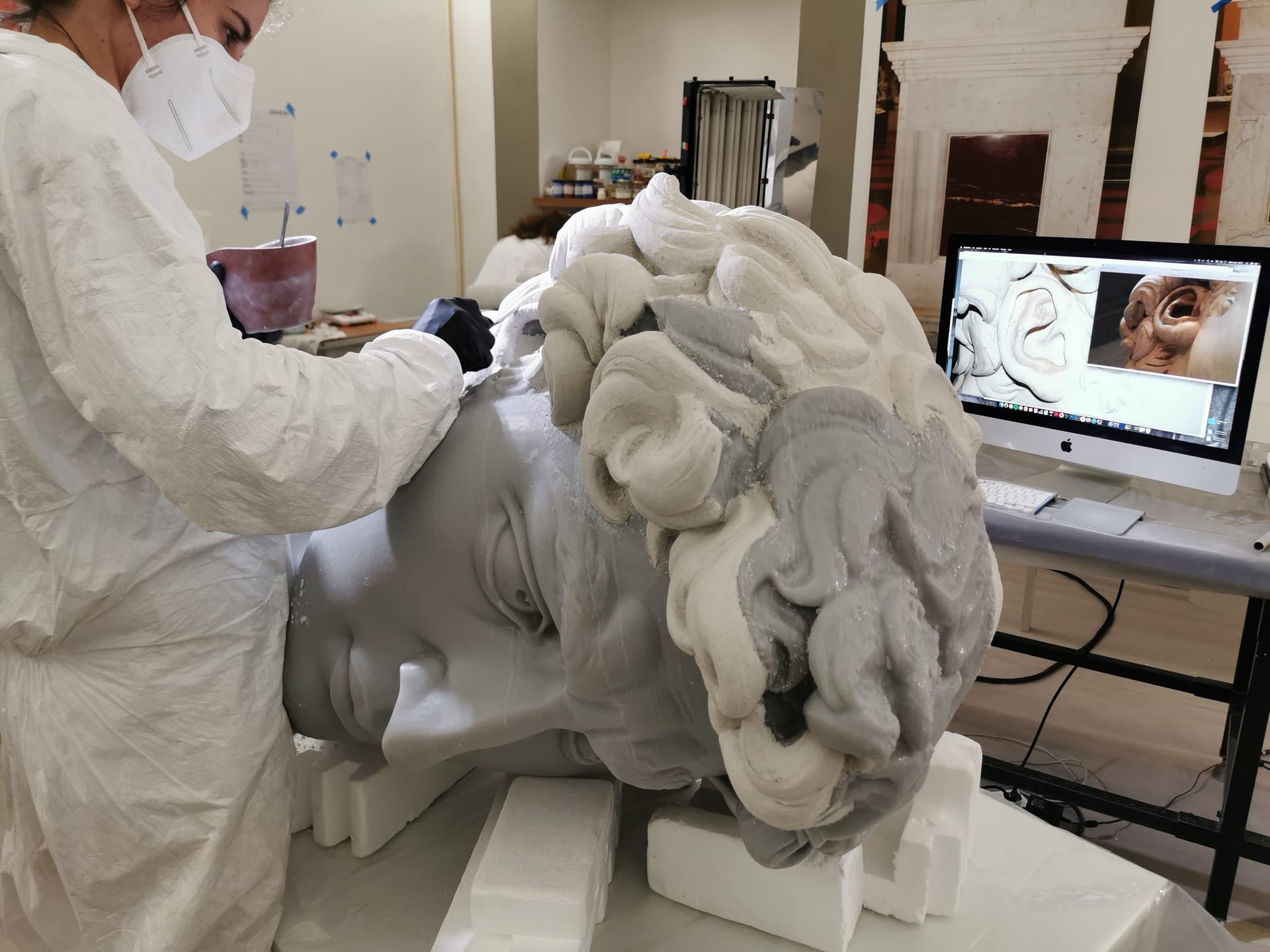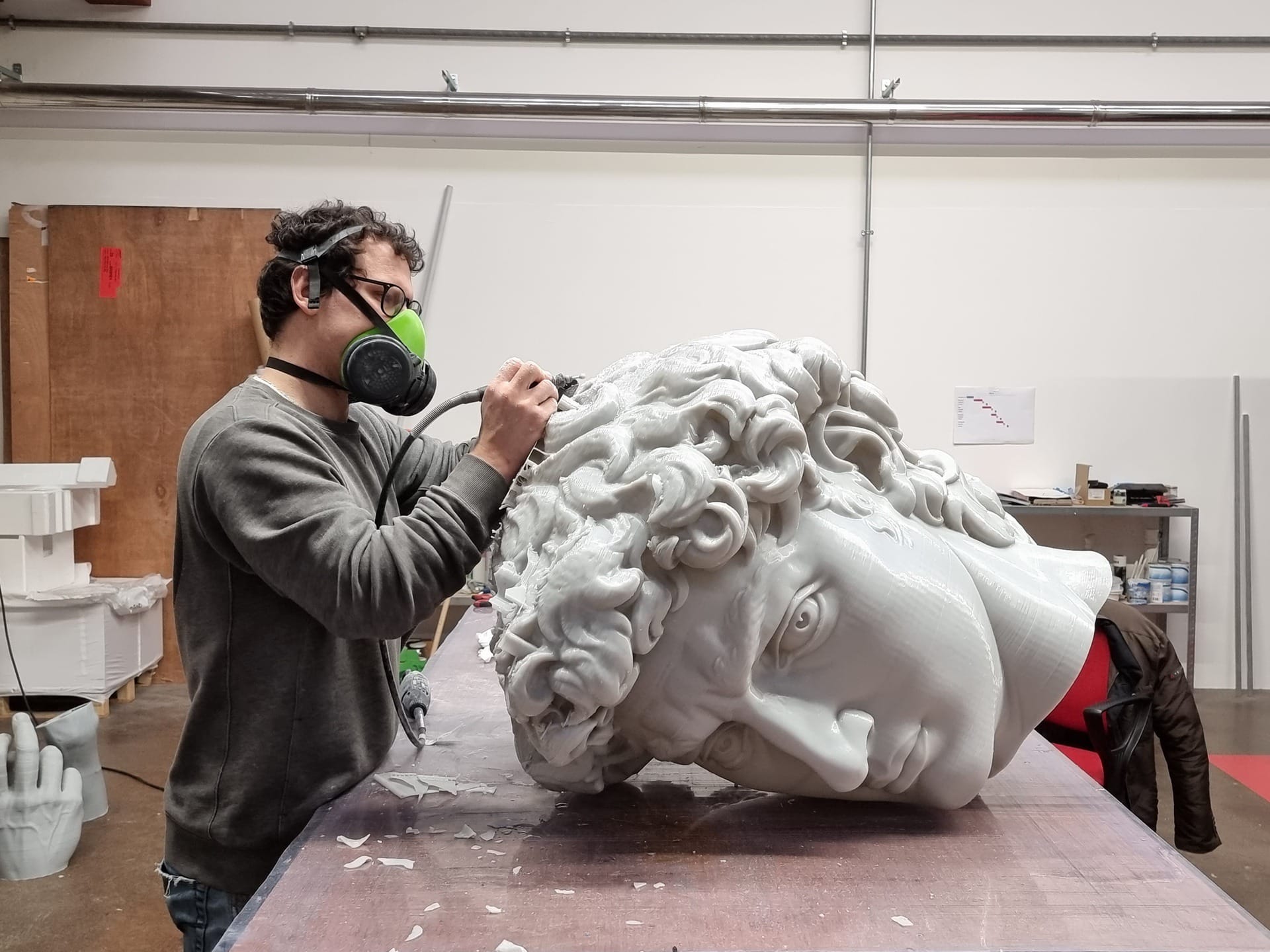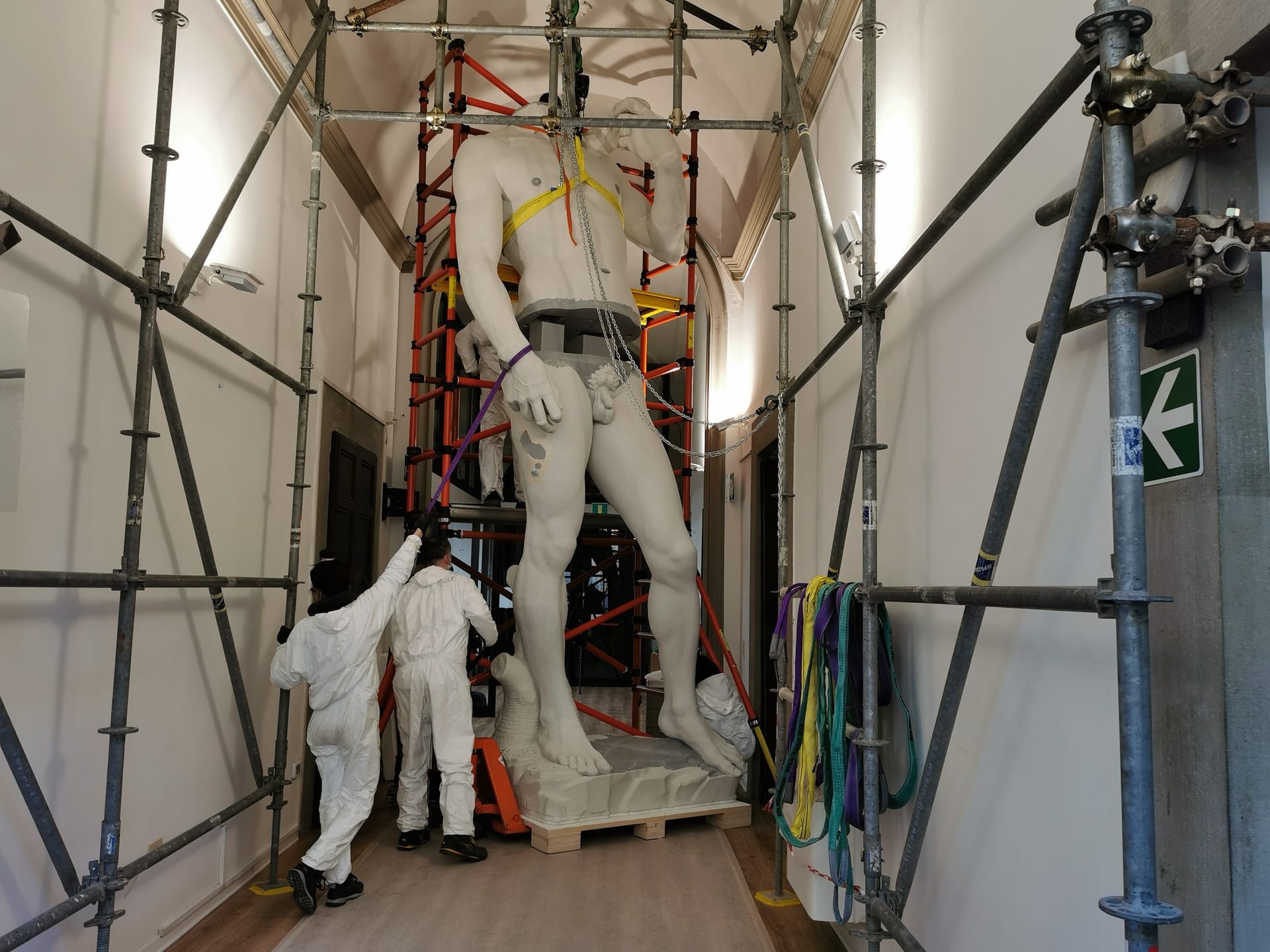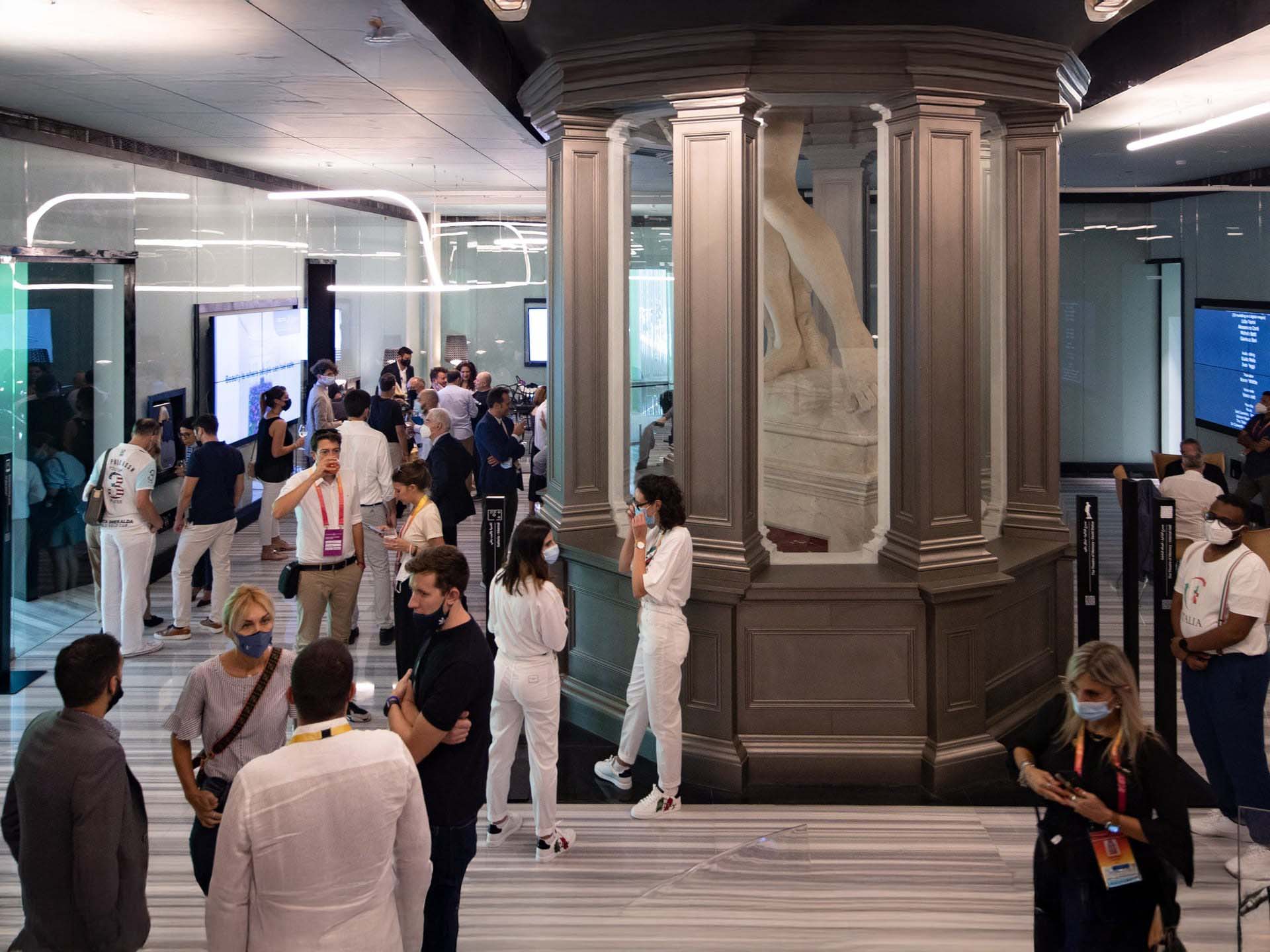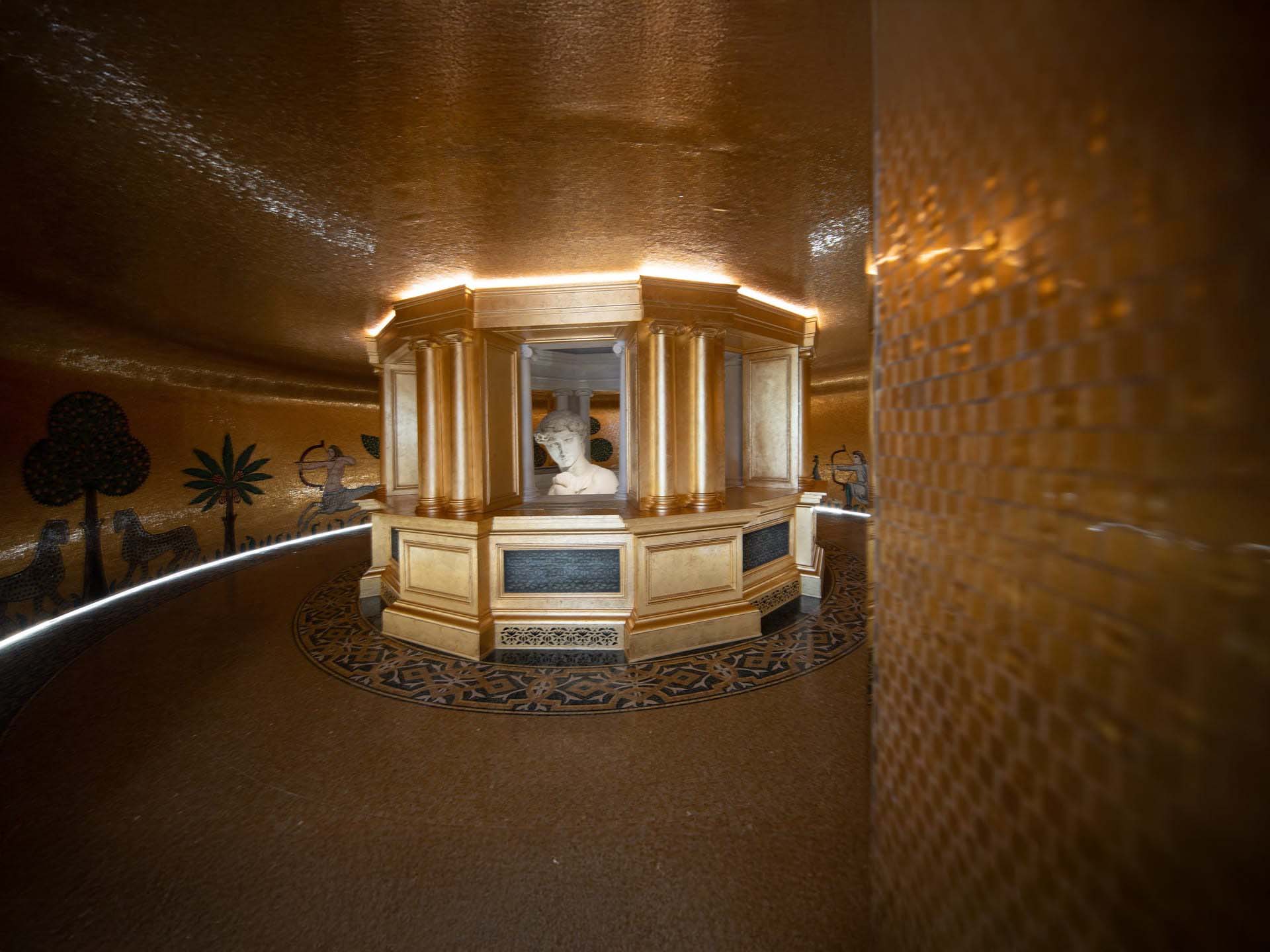
From the Replica of David to CHEDAR: Continuity in an Innovative Approach to Heritage Knowledge
The reproduction of Michelangelo’s David, created for Expo 2020 Dubai, represents a tangible example of how digital technologies can support cultural heritage enhancement initiatives, including the creation of physical replicas.
The initiative, promoted by the Commissioner General for Italy at Expo Dubai 2020 and carried out under the patronage of the Italian Ministry of Cultural Heritage and Activities and Tourism (MiBACT), brought together multidisciplinary expertise, advanced technologies, and a project approach that placed digitalisation first and foremost at the service of knowledge about the work. This digital foundation then enabled the production of a physical replica, combining technological innovation with specialist craftsmanship.
The digital survey of the David was conducted using high-precision instruments, typically employed in industrial contexts for metrological inspection and reverse engineering. Specifically, a structured light fringe scanner was used for high-resolution data acquisition, while an optical tracking scanner ensured drift control. The collected data were integrated into a single, high-precision three-dimensional model, capable of capturing not only the proportions and surfaces of the statue but also minute details such as tool marks left by Michelangelo and subtle chromatic variations in the marble’s texture.
This digital model then served as the basis for producing a physical replica using state-of-the-art 3D printing technologies. The precision of the process ensured a high degree of fidelity to the original.
The replica of the David, positioned at the centre of the Italian Pavilion at Expo Dubai, and complemented by an immersive installation, offered visitors an uninterrupted and unique perspective of the statue, allowing them to observe it closely and even meet its gaze. The project had a strong impact on the international audience, with more than 25 million visitors attending the event.
More than a simple reproduction, the project stands as a case study highlighting the potential of digital heritage practices in terms of sustainability, accessibility, and cognitive engagement. The digital model of the David is now a valuable educational and scientific resource, useful for advanced training and interdisciplinary experimentation across digital humanities, conservation sciences, and artificial intelligence.
